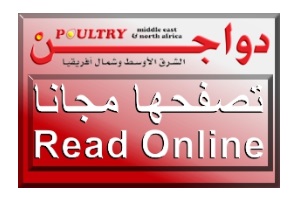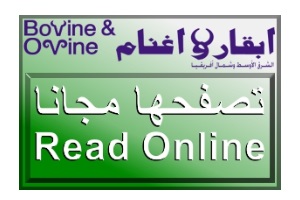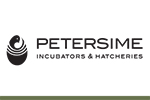 By Dr Khaled Okasha
By Dr Khaled Okasha
Heat stress poses a significant threat that can lead to substantial financial losses for the poultry industry in many regions worldwide. Unfortunately, we lack precise figures on the cost of heat stress losses in the Middle East and North Africa. However, some estimates suggest its cost exceeds $100 million annually. In 2023, the economic losses for the poultry industry in the United States were estimated to be between $128 million and $165 million.
Heat stress is defined as the inability of poultry to maintain a balance between body heat production and heat loss. There are degrees of heat stress (mild, moderate, severe), and the severity mainly depends on factors such as heat production, humidity, the animal's thermoregulation capacity, metabolic rate, age, intensity, and duration of heat exposure.
Due to continuous genetic improvement in new broiler chicken breeds, their metabolic processes are rapid, leading to higher heat production and increased susceptibility to heat stress. This article will discuss the major problems of heat stress and how to mitigate its side effects through some practical nutritional strategies.
Heat Stress in Poultry
Heat stress is defined as the inability of poultry to maintain a balance between body heat production and heat loss. This condition affects poultry due to high ambient temperatures, sometimes accompanied by increased relative humidity, negatively impacting their productive performance and potentially leading to mortality.
Birds are warm-blooded (homeothermic) animals that maintain a relatively constant body temperature. They lack sweat glands to eliminate excess heat and have skin sebaceous glands, which hinder heat loss. Body temperature is regulated through four methods:
- Radiation: Transfer of heat from a hot body to a cold body without a medium, like the sun transferring heat from the skin surface through the air to other bodies.
- Conduction: Transfer of heat from a hot part of the body to a cold part of the same body or to another body through direct contact, such as between a chicken and a cold surface.
- Convection: Transfer of heat by moving air or fluids around the body.
- Evaporation: The process where water transitions from liquid to gas, cooling the body when chickens breathe, evaporating water from their respiratory system.
Suitable Thermal Range for Poultry
The thermal comfort zone ranges from 18-25°C, with a respiratory rate of 30 breaths/min and heat loss through breathing accounting for about 30% of total heat loss. Physiological constants (blood pH and internal temperature) are maintained within this range.
When barn temperatures are between 28-30°C, the first three methods are sufficient for heat loss. However, as temperatures approach the chicken's body temperature of 41°C, these methods become ineffective, leading birds to resort to thermal evaporation for heat dissipation through panting. Evaporating 1 gram of water consumes approximately 540 calories, increasing the bird's energy needs to maintain a body temperature of 41-42°C. Exceeding this temperature results in mortality.
Older or larger birds are more susceptible to heat stress due to the specific dynamic action of essential nutrients or "Specific Dynamic Action," where the energy released during digestion increases body heat. Proteins generate the most heat, followed by carbohydrates, while dry fats and oils generate the least. Oils produce significantly less heat than dry fats. With increased feed consumption and weight, the energy produced also rises, making larger chickens more sensitive to high heat.
Ideal Barn Temperature
The ideal barn temperature depends on the chicken's age and surrounding conditions:
- Chicks during brooding: In the first week of life, chicks need a high temperature of about 35°C.
- Older chickens: As chickens age, the need for heat decreases. Older chickens should have a temperature between 20-27°C.
- Relative Humidity: It should be below 50%. If the temperature exceeds 35°C, heat stress symptoms may appear. High temperatures combined with 100% relative humidity can lead to chicken mortality, whereas high temperatures with 50% relative humidity help chickens dissipate excess heat through moist panting, regulating their body temperature.
Heat Stress in the Middle East
The 21st century will be unbearably hot for the Middle East, where temperatures are rising twice as fast as the global average. If this trend continues, average temperatures in some areas could rise by 4 degrees by 2050. The goal of limiting global warming to 1.5 degrees, as outlined in the Paris Agreement, seems already unattainable in the region.
According to research by the Max Planck Institute for Chemistry, the Middle East, including densely populated countries like Egypt, Iran, and Iraq, will face unprecedented heat waves that will make life in some areas impossible. High humidity areas like the Gulf states (UAE, Kuwait) are particularly vulnerable. Under these conditions, the human and animal bodies struggle to regulate their temperatures, leading to rapid onset of heat stress, which can cause severe problems or even death in acute cases.
A World Bank report indicates that temperatures of 56°C could become the norm in the Middle East and North Africa shortly, with parts of Algeria, Saudi Arabia, and Iraq expected to become 8°C warmer by the end of the century. Climate change has increased the prevalence and severity of heat stress conditions in most poultry production areas in the Middle East, with record temperatures being documented.
Table (1): Impact of Ambient Temperature on Poultry
| Temperature (°C) | Effects on Poultry |
|---|---|
| 18-25 | Optimal performance and physiological balance |
| 28-30 | Mild to moderate heat stress, increased respiration, and moderate heat loss |
| 35+ | Severe heat stress, increased water consumption, panting, and potential mortality |
Symptoms of Heat Stress in Poultry
- Birds move away from each other: They seek cool, ventilated areas in the barn and contact cold surfaces like floors and walls.
- Dipping beaks and wattles in water: Birds immerse their beaks and wattles in water from drinkers.
- Fluffed feathers: Birds lie down, spread their wings, and extend their wings away from their bodies to increase the body surface area exposed to cool air.
- Reduced feed intake: Noticeable reduction in feed consumption (to lower digestive heat increment), leading to loss of appetite, weight loss, and negative impact on production performance. Feed consumption decreases by 4-5% for every degree Celsius above 30°C.
- Increased water intake: Noticeable increase in water consumption and urine output.
- Signs of fatigue: Birds extend and enter a coma, which may lead to mortality.
- Increased respiratory rate: Birds pant, leading to respiratory difficulties and possible seizures and mortality due to increased blood alkalinity.
- Reduced calcium absorption in laying hens: Increased incidence of thin-shelled and broken eggs.
Panting
As mentioned earlier, panting is one of the methods chickens use to cope with excess heat. When the temperature rises, it becomes difficult for chickens to eliminate high heat through natural methods like radiation, conduction, and convection. Without sweat glands, chickens rely on panting to cool down. Panting involves rapid, shallow breathing, allowing water evaporation from the lungs and respiratory tract, consuming heat and causing significant water loss, increasing dehydration risk.
Panting can alter the acid-base balance in chickens. Rapid breathing to cool down can expel large amounts of carbon dioxide, leading to an imbalance in the acid-base balance in the body. This change can result in "blood alkalosis," where the blood becomes more alkaline than normal, increasing blood viscosity and blood pressure. High blood pressure can overload blood vessels in various parts of the body, including the liver, brain, and kidneys. In severe cases, this can lead to vessel rupture and mortality.
Oxidative Stress
Oxidative stress is a significant physiological disorder caused by heat stress, characterized by an increase in free radicals that damage tissues and cells in the bird's body, increasing disease susceptibility and decreasing growth and production rates. Antioxidants help neutralize or expel these free radicals from the body.
Nutritional Strategies to Alleviate Heat Stress
Feed Restriction
Providing feed during cooler parts of the day (early morning or evening) and avoiding feeding during the hottest times of the day can reduce metabolic heat production from feed consumption. Feeding during cooler times improves poultry production performance and reduces heat stress perception. However, feed restriction can increase birds' rush and attack on feed when it is offered, potentially causing some mortality.
Wet Feeding
Adding water to feed increases water intake, reduces gut viscosity, speeds up food passage, stimulates pre-digestion processes, improves nutrient absorption from the intestines, and accelerates enzymatic digestion of feed. Using wet feeding in broilers has improved feed intake, body weight, and egg production in laying hens. However, this method increases the risk of fungal growth, potentially leading to mycotoxin poisoning, and is challenging to implement commercially.
Dual Feeding Regime
Providing two different feeds: protein-rich feeds in the early morning and night when temperatures are lower, and energy-rich feeds during hotter times, as heat from protein metabolism is higher than that from energy metabolism. This method considers the increased need for certain amino acids, such as methionine and arginine, to meet the higher amino acid requirements for survival. However, this regime is difficult to implement commercially and negatively affects production performance.
Adding Fats to Feed
Energy-rich feeds significantly alleviate the partial effects of heat stress in poultry. As mentioned earlier, fats produce less heat during metabolism compared to proteins and carbohydrates. Therefore, adding fats to feed formulations can be a practical measure in hot climates to increase energy levels and reduce the harmful effects of heat stress.


















